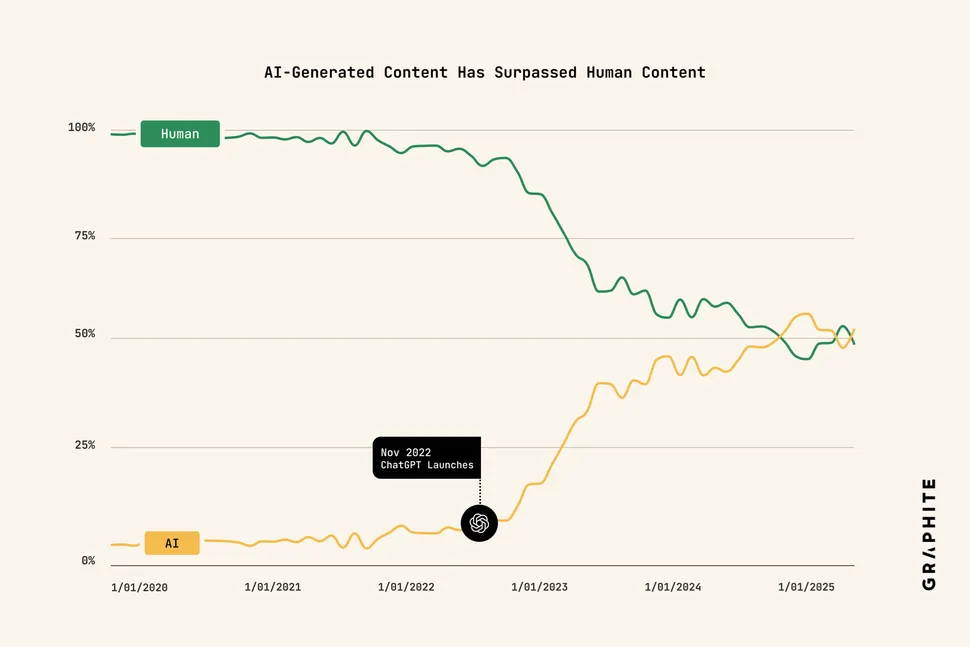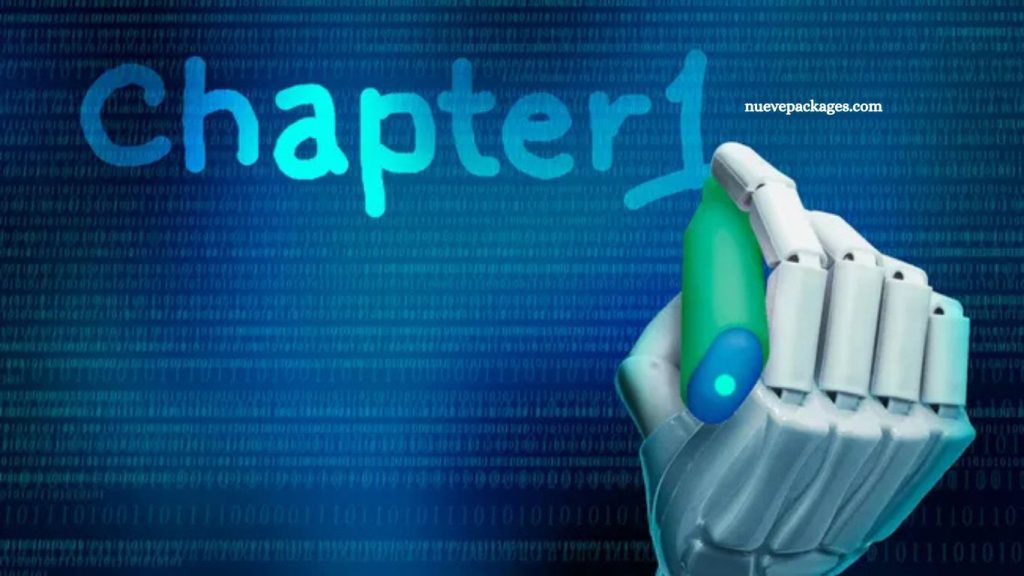A recent study by Graphite reveals a significant shift in online content creation: most newly published articles are now generated by artificial intelligence rather than humans. Analyzing 65,000 English-language URLs from the Common Crawl archive, researchers found that AI-generated content surpassed the 50% mark of new web articles in November last year.
While the proportion has plateaued in recent months, the data highlights a dramatic transformation in how information is produced online. Despite the surge in AI-authored articles, human-written content still dominates search engine visibility and reader engagement. This study underscores the growing role of AI in digital publishing while emphasizing that quality, creativity, and audience connection remain firmly in human hands.
How the Study Was Conducted
The research analyzed 65,000 English-language URLs from the Common Crawl archive, focusing on content with article markup published between 2020 and 2025. Each article was classified as AI-generated or human-written if over half of its content met AI detection criteria. Although the detection tools are not flawless, the study estimated false-positive and false-negative rates of just 4.2% and 0.6%, respectively.
Read More: Instagram to Give Parents Control Over Teens’ AI Chat Interactions
Quantity vs. Visibility
The findings may surprise many, since quantity does not equal visibility. Despite the large influx of AI-generated articles, most of these pieces fail to perform well in search engine rankings. Both Google and AI platforms like ChatGPT still favor human-authored content, leaving many machine-written articles largely unnoticed by readers.
The Rise of AI in Content Creation
The surge in AI-written content closely follows the public release of ChatGPT in late 2022. Within a single year, AI authorship of online articles jumped from virtually zero to nearly 40%. Growth has slowed since then, likely due to the limited visibility and engagement of AI-generated content.
In sheer volume, however, AI now outpaces human writers. This shift reflects a broader trend among media companies, marketers, and content farms seeking ways to produce text without the high cost of human labor. As AI tools have become faster and more affordable, the incentive to automate content creation has grown. Each new generation of AI models delivers higher output at lower cost, making machine-generated content an attractive option for many publishers.
Limitations of AI Content
Yet, the results are often underwhelming. AI-generated articles are frequently dull, repetitive, and optimized more for quantity than quality. This “churn” of content rarely captures attention organically, and Google has explicitly deprioritized AI-written material in search rankings. The technology may produce content quickly, but it often lacks the creativity, nuance, and engagement that human writers bring.
Publishers Reconsider Full Automation
The data also suggests a growing awareness of AI’s limitations. Graphite reports that the proportion of new AI-written articles has remained relatively flat since May, indicating that publishers may be reconsidering full automation. Instead, many appear to be integrating AI as a tool to assist human writers rather than replace them entirely.

AI-detection tools, while imperfect, are improving. Platforms relying heavily on low-quality machine-generated content risk reputational damage and reduced audience engagement. As readers increasingly reject uninspired AI output, publishers are being forced to balance efficiency with quality.
Humans Still Drive Engagement
The rise of AI content highlights a new reality: the internet is now a co-authored space, blending human and machine input. But the study underscores a critical point—people still prefer reading material crafted by humans. Authenticity, creativity, and clarity remain key drivers of engagement.
In summary, while AI dominates the sheer volume of online articles, its impact on meaningful engagement is limited. Human-written content continues to outperform in search visibility, reader preference, and overall quality. Publishers are gradually recognizing that the future of content lies in collaboration: leveraging AI for efficiency while preserving human insight and creativity.
Frequently Asked Questions
What percentage of new online articles are written by AI?
According to a Graphite study, over 50% of newly published articles are now AI-generated.
How was AI content detected in the study?
Researchers analyzed 65,000 English-language URLs using AI-detection tools, classifying articles as AI-written if over 50% matched AI content criteria.
Does AI content perform well in search engines?
Most AI-written articles perform poorly in SEO, as Google and AI platforms prioritize human-created content.
Why has AI content surged recently?
The rise of tools like ChatGPT since 2022 has enabled publishers to produce more articles faster and at lower cost.
Are AI-generated articles lower quality than human-written ones?
Often, yes. AI content can be repetitive, bland, and lacks the creativity and nuance that engage readers.
Are publishers moving away from fully AI-generated content?
Yes. Data suggests that many are now using AI to assist human writers rather than rely on full automation.
What does the future of online content look like?
The internet is becoming a hybrid space where AI and humans co-author content, with quality and engagement still driven by humans.
Conclusion
The rise of AI-generated content has transformed the digital landscape, with machines now producing over half of new online articles. However, volume alone does not guarantee visibility or engagement. Human-written content continues to dominate search rankings and capture readers’ attention, highlighting the enduring value of creativity, nuance, and authenticity.

